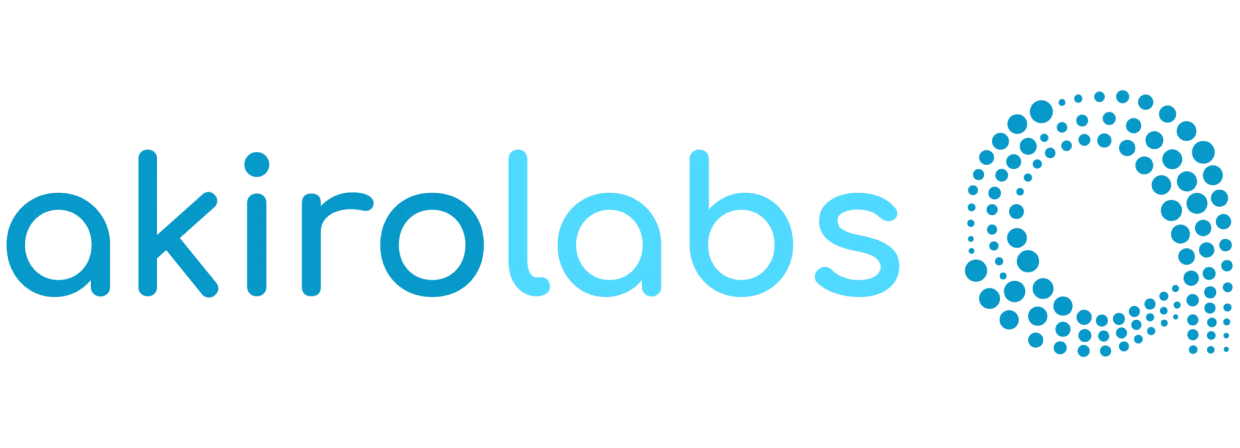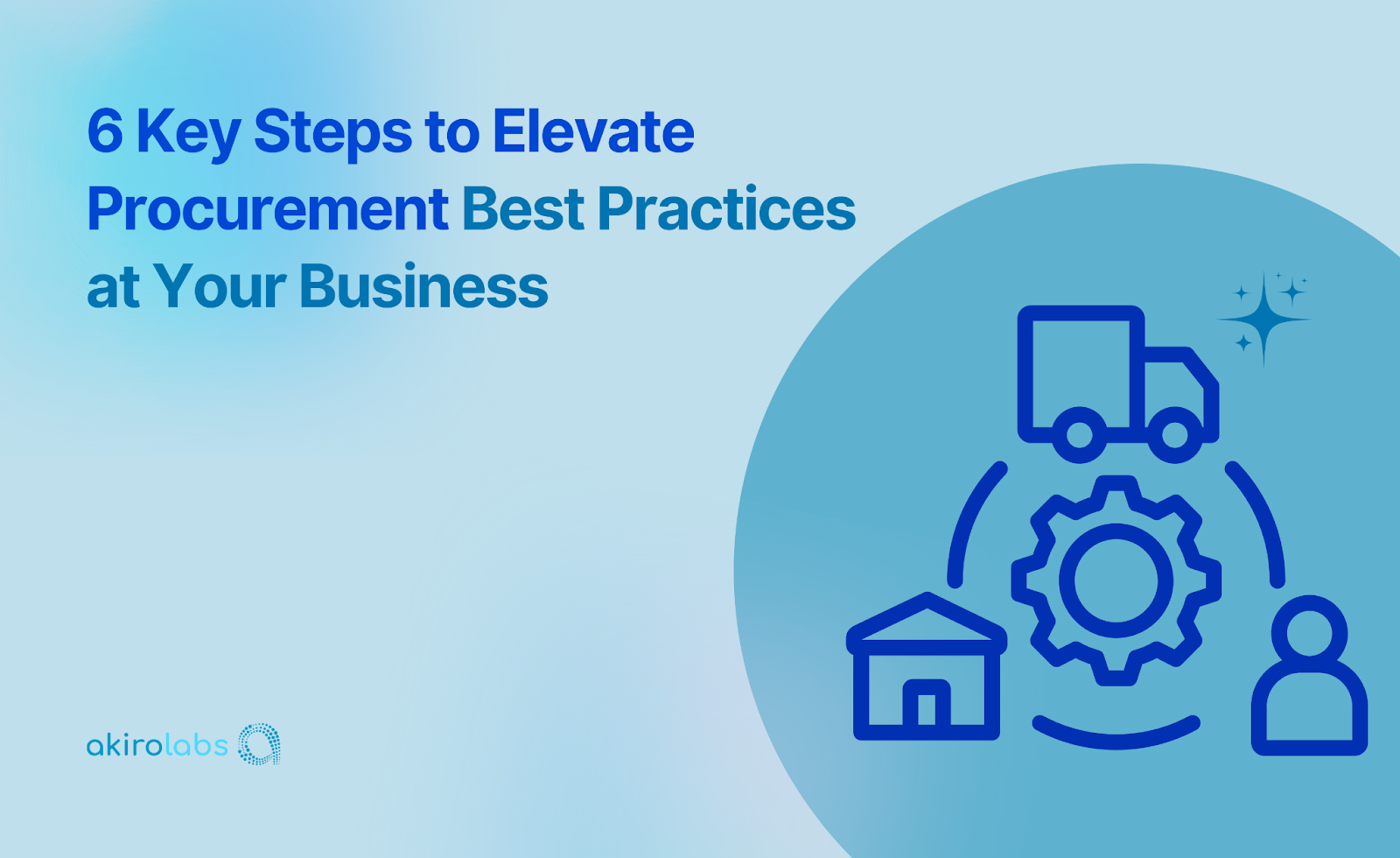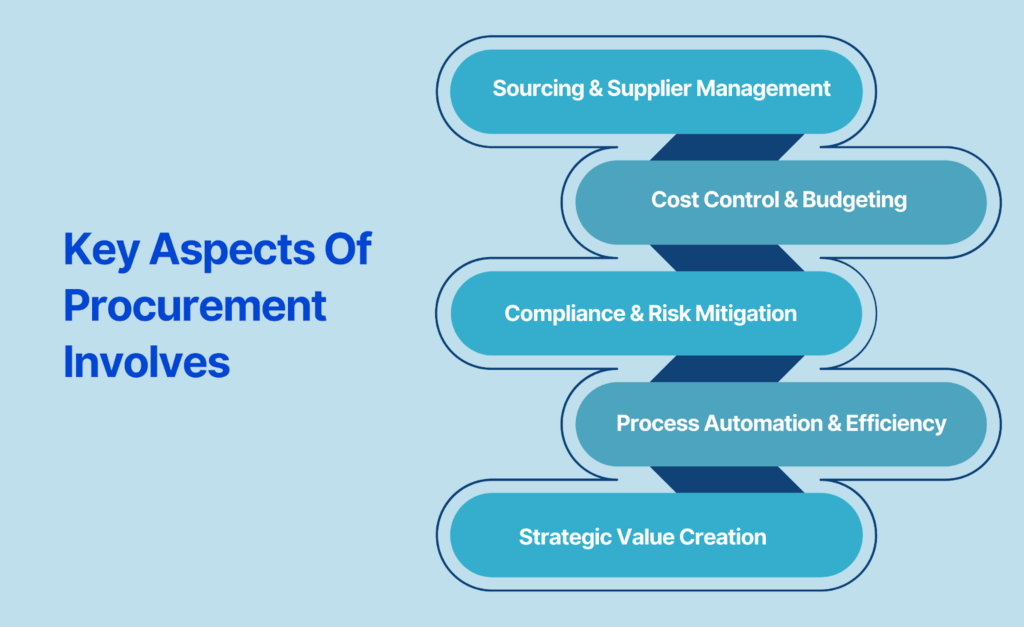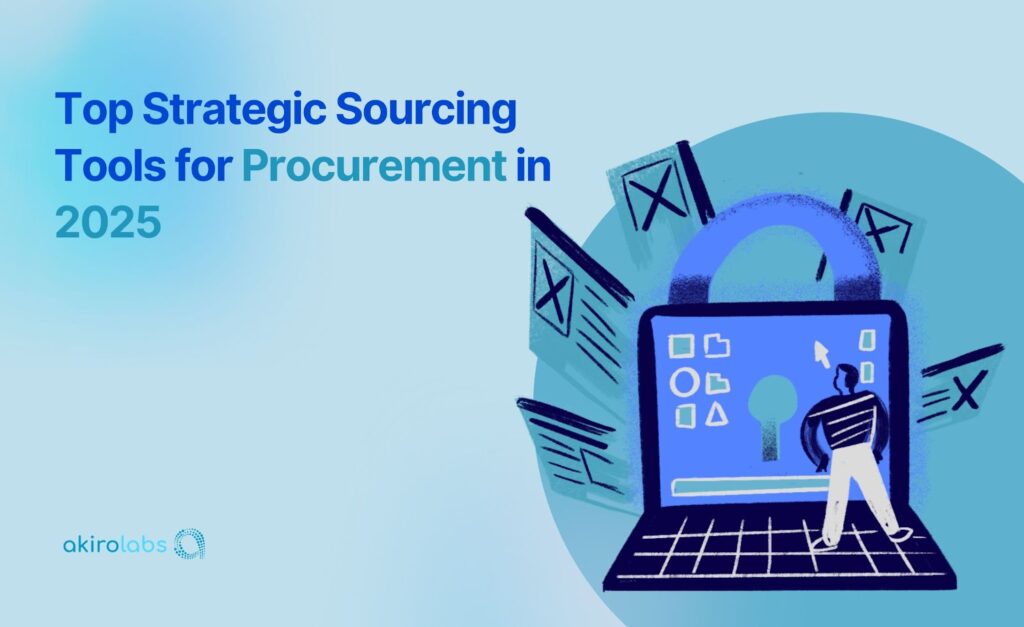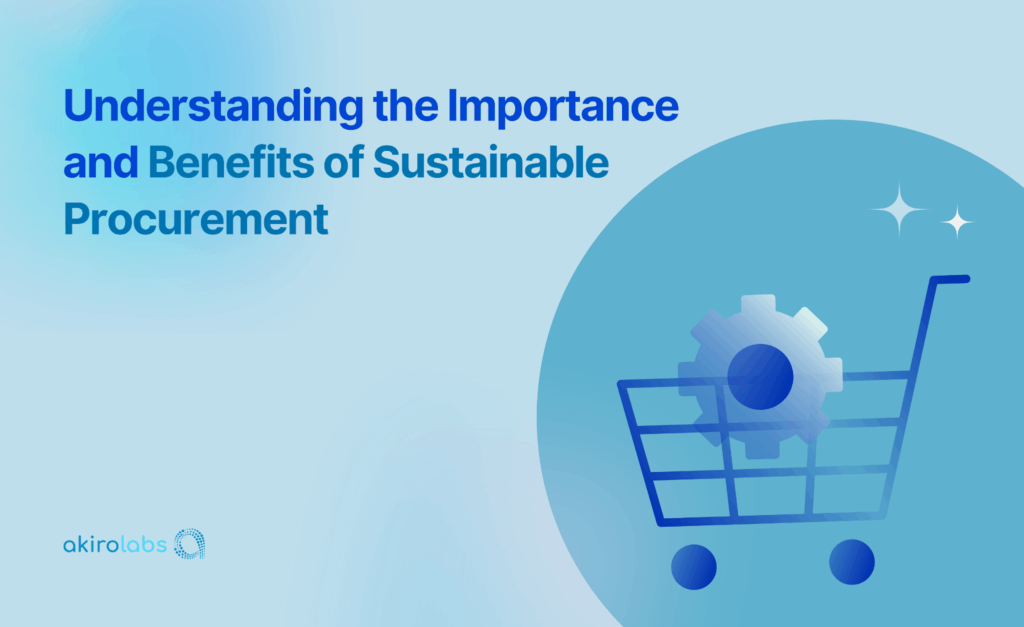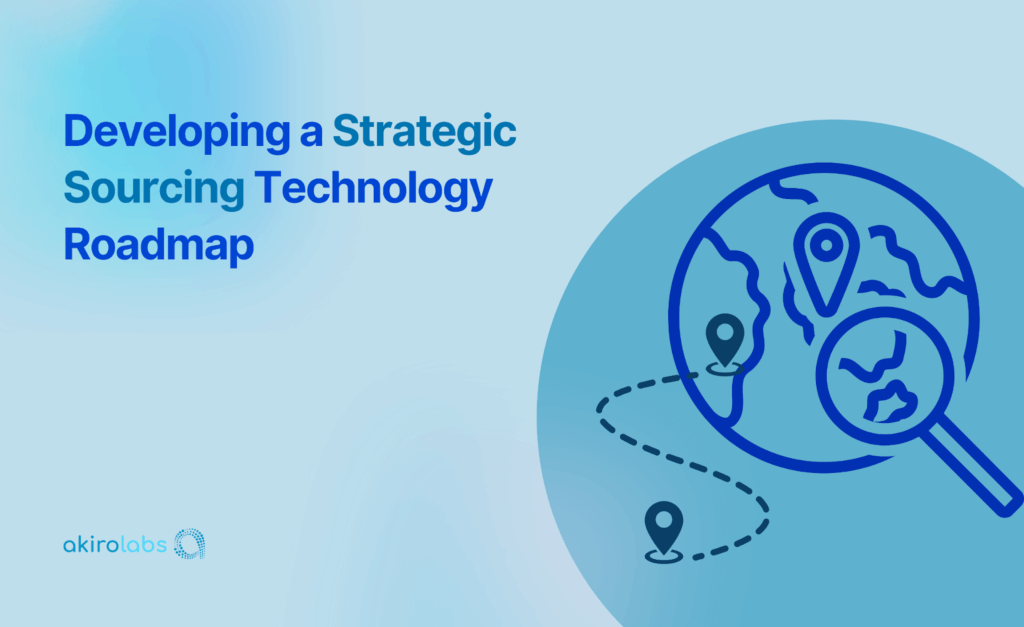Did you know that outdated procurement practices could be costing your business thousands, if not millions, each year?
From inefficient processes and rising costs to supply chain disruptions, businesses that fail to modernize their procurement strategy risk falling behind the competition.
But here’s the good news: with the right approach, procurement can become a powerful driver of cost savings, supplier innovation, and business growth.
In this article, we’ll walk you through six essential steps to elevate your procurement game, backed by data-driven insights, automation strategies, and best practices for building a resilient, high-performing supply chain.
What is Procurement?
Procurement is the strategic process of acquiring goods, services, or works from external sources to meet a company’s operational needs. It involves everything from supplier selection and contract negotiation to purchasing, risk management, and cost optimization.
Key aspects of procurement involve:
- Sourcing & Supplier Management: Identifying reliable suppliers, negotiating contracts, and maintaining strong relationships.
- Cost Control & Budgeting: Ensuring procurement aligns with financial goals while optimizing spending.
- Compliance & Risk Mitigation: Adhering to regulations, sustainability standards, and ethical sourcing practices.
- Process Automation & Efficiency: Leveraging technology to streamline purchasing, invoicing, and approvals.
- Strategic Value Creation: Moving beyond cost-cutting to drive innovation, resilience, and competitive advantage.
Procurement vs Purchasing: What is the Difference?
While often used interchangeably, procurement and purchasing are distinct:
Procurement | Purchasing |
Strategic, long-term approach | Tactical, short-term focus |
Includes supplier evaluation, contract negotiation, and risk management | Involves issuing purchase orders and processing transactions |
Aims to optimize costs, innovation, and supply chain resilience | Focuses on acquiring goods and services as needed |
Now that we’ve covered the fundamentals, let’s explore how to elevate procurement practices with six essential steps.
Why Elevating Procurement Practices Matters?
1. The Cost of Outdated Procurement Methods
Outdated procurement practices are a significant hurdle for businesses aiming to stay competitive. They contribute to inefficiencies, increased costs, and missed strategic opportunities.
Here’s why modernization is essential:
1. Operational Inefficiencies:
- Delays in purchase approvals and order processing.
- Excessive manual tasks waste valuable resources.
2. Higher Costs:
- Lack of spend visibility leads to poor supplier negotiations.
- Missed opportunities for cost-saving alternatives and economies of scale.
3. Competitive Disadvantages:
- Inability to respond quickly to market demands.
- Limited access to innovative supplier solutions due to outdated methods.
Deloitte’s 2023 Global Chief Procurement Officer (CPO) Survey notes that 40% of firms consider operational efficiency and digital transformation as strong priorities to better enable category management and supplier collaboration for reducing total cost and increasing value.
2. Rising Challenges in the Supply Chain
The dynamic global supply chain landscape presents new challenges for procurement teams. Businesses must adapt quickly to maintain resilience and ensure operational continuity.
1. Global Disruptions:
- Events like COVID-19 highlighted vulnerabilities with supplier delays and material shortages.
- Natural disasters, geopolitical tensions, and regulatory changes continue to pose risks.
2. Complex Market Dynamics:
- Fluctuating raw material prices and currency exchange rates.
- Increased demand for ethical and sustainable sourcing practices.
3. Growing Customer Expectations:
- Pressure to deliver faster, more cost-efficient products and services.
- Rising expectations for transparency and sustainability in procurement processes.
Given these challenges and opportunities, adopting modern procurement practices becomes a strategic imperative. Businesses need actionable steps to transform procurement into a value-driven function, enhance efficiency, and build resilient supply chains.
Also read Understanding the Process, Importance, and Meaning of Supplier Management
6 Essential Steps for High-Performing Procurement
To stay competitive and resilient, businesses must adopt strategic approaches to procurement. This involves leveraging technology, fostering collaboration, and streamlining procurement processes for efficiency.
By following key steps, organizations can unlock greater value, minimize risks, and achieve operational excellence in their procurement functions.
Step 1: Establish a Unified Core Data Platform
Centralizing procurement data is essential for gaining a comprehensive view of supplier performance, spending patterns, and market opportunities.
Benefits of a Unified Data Core:
- Improved Accuracy: Reduces errors caused by inconsistent or fragmented data.
- Faster Decision-Making: Enables real-time insights for agile sourcing strategies.
- Enhanced Visibility: Provides a comprehensive overview of procurement activities for better monitoring and forecasting.
Best Practices:
- Integrate procurement data with ERP, CRM, and finance systems to ensure seamless data sharing.
- Implement robust data governance frameworks to maintain data quality and security.
- Train procurement teams on data interpretation for informed decision-making.
Step 2: Create a Dynamic Information Flow
Rigid procurement processes are ill-equipped to handle sudden disruptions or market fluctuations.
Benefits of a Dynamic Information Flow:
- Faster Response Times: Quick identification and resolution of supply chain disruptions.
- Agile Decision-Making: Empowering procurement teams to adapt sourcing strategies on the fly.
How to Implement:
- Establish clear communication protocols between departments such as sales, finance, and procurement.
- Use digital collaboration tools to facilitate real-time data sharing and discussion.
- Schedule regular cross-functional meetings to discuss procurement challenges and opportunities.
Step 3: Automate Manual Processes
Manual procurement processes are time-consuming, prone to errors, and inefficient.
Key Advantages of Automation:
- Cost Efficiency: According to the Gartner 2021 I&O Leaders Survey, 80% of respondents consider automation as a top tactic to achieve cost optimization.
- Time Savings: Faster processing of purchase orders, approvals, and payments.
- Reduced Errors: Automation minimizes human mistakes in data entry and invoice processing.
How to Execute:
- Implement AI-powered procurement software to handle tasks like requisition approvals, supplier onboarding, and invoice reconciliation.
- Automate compliance tracking to ensure adherence to procurement policies and regulations.
- Regularly update and optimize automated workflows for continuous improvement.
Step 4: Improve Collaboration with Critical Suppliers
Strong supplier relationships are crucial for innovation and supply chain efficiency.
Benefits of Strong Supplier Collaboration:
- Better Product Quality: Suppliers are more likely to meet quality standards when relationships are nurtured.
- Cost Savings: Collaborative partnerships often lead to favorable pricing and terms.
- Enhanced Supply Chain Performance: Reduced lead times and improved delivery schedules.
How to Achieve:
- Conduct regular supplier performance evaluations using metrics like delivery timelines, quality scores, and service levels.
- Foster open communication channels for feedback, issue resolution, and joint innovation efforts.
- Develop long-term contracts with key suppliers to build trust and mutual growth opportunities.
Step 5: Adopt an Automated, Consumer-Like Procurement Model
Procurement systems should be as intuitive and user-friendly as popular consumer apps.
Why It Matters:
- Enhanced User Adoption: Employees are more likely to follow procurement processes when the system is easy to use.
- Improved Compliance: Simplified processes encourage adherence to procurement guidelines.
Implementation Tips:
- Choose platforms with self-service options, enabling employees to create purchase requests independently.
- Opt for solutions with mobile capabilities, allowing procurement activities on the go.
- Incorporate features like personalized dashboards and guided buying to simplify user experiences.
Step 6: Enrich Planning Capabilities with Data-Driven Insights
Proactive planning is essential for aligning procurement strategies with broader business goals.
Key Focus Areas:
- Spend Analysis: Identify patterns and trends to highlight cost-saving opportunities.
- Market Analysis: Anticipate price fluctuations, supplier risks, and emerging trends.
- Demand Forecasting: Predict future procurement needs to avoid stockouts or excess inventory.
Best Practices:
- Use predictive analytics tools to forecast demand and optimize sourcing strategies.
- Develop contingency plans based on market trends and supplier risks.
- Schedule periodic reviews of procurement plans to ensure alignment with evolving business objectives.
akirolabs: Elevate Your Procurement Game
To operationalize the six steps outlined above, especially around data centralization, automation, and supplier collaboration, organizations need more than disconnected tools. They need a unified system designed specifically for procurement strategy. akirolabs fills this critical gap by serving as an AI-enabled platform that digitizes and governs every stage of strategic procurement, from category analysis to execution tracking.
Designed for Strategic Procurement
akirolabs is not a transactional sourcing tool. It functions as a cloud-native operating system for category strategy, built to support cross-functional teams across procurement, finance, R&D, and sustainability. With its role-based design, teams can collaboratively build, customize, and monitor category strategies using structured workflows and embedded intelligence.
What Sets akirolabs Apart
1. Unified Data and Analysis Core
akirolabs consolidates internal spend data, supplier information, and external market signals into a single interface. This enables procurement teams to:
- Analyze supplier performance using built-in tools like SWOT, PESTLE, and risk heatmaps
- Integrate ERP, supplier risk systems, and market intelligence feeds directly into the strategy workflow
- Run data-driven opportunity assessments and scenario comparisons.
2. Automation with Strategic Context
Unlike generic automation platforms, akirolabs embeds automation into the strategic process:
- AI-powered summarization and action recommendations (via akiroAssist)
- Preconfigured templates for category planning, stakeholder surveys, and initiative tracking
- Version control, audit trails, and role-based approvals ensure governance without friction.
3. Real-Time Collaboration Across Stakeholders
akirolabs eliminates the back-and-forth across emails and documents:
- Teams collaborate in shared digital workspaces with tagging, comments, and in-app chat
- Stakeholder surveys and approvals are embedded into each strategy phase
- Executives can access live dashboards and executive summaries for informed decisions.
4. Strategy Execution and Impact Tracking
Most procurement tools stop at planning. akirolabs ensures follow-through by:
- Breaking down strategies into initiatives with timelines, KPIs, and ownership
- Tracking cost savings, risk mitigation, and ESG impact in real time
- Linking strategic intent to measurable outcomes across categories and regions
The Outcome: Procurement as a Strategic Enabler
For organizations aiming to modernize procurement, akirolabs provides the foundation to implement smarter, faster, and more collaborative procurement strategies. It supports everything from high-level planning to on-ground execution, making it easier to drive cost optimization, ensure supplier accountability, and build supply chain resilience.
By adopting a platform like akirolabs, businesses can move beyond reactive purchasing models and embed a proactive, data-first procurement approach that scales with growth and complexity.
Ready to revolutionize your procurement strategy? akirolabs is the solution.
Conclusion
Procurement is about creating value, driving innovation, and building resilience. By following these six steps and leveraging AI-powered procurement tools like akirolabs, businesses can reduce costs without compromising quality, strengthen supplier relationships for long-term success, and improve efficiency through automation and data-driven decisions.
Additionally, companies can mitigate supply chain risks and stay ahead of disruptions, ensuring stability in an unpredictable market. Elevate your procurement strategy with akirolabs to unlock sustainable growth, enhance operational agility, and position your business for long-term success.
Looking to revolutionize your procurement strategy? Book a demo today and unlock new opportunities for growth and efficiency.
